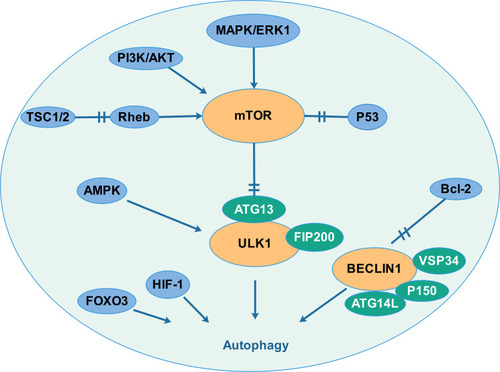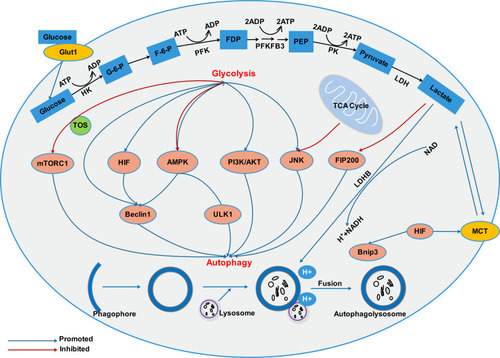Figures & data
Figure 1 Autophagy is mediated by multiple signaling pathways that creating an interaction network system. Several signal molecules (PI3K/AKT pathway, MAPK pathway, TSC1/2 and the p53 tumour suppressor) regulate the mTOR pathway and then regulate autophagy by interacting with the uncoordinated 51-like kinase-1 (ULK1) complex. Autophagy also responds to intracellular energy. The 5′-adenosine monophosphate (AMP)-activated protein kinase (AMPK) which is upregulated by increasing AMP levels inactivates mTORC1 and activates ULK1. Autophagy is also regulated by the Beclin1 complex. Bcl-2, a key regulator of apoptosis, which binds and interacts with beclin1 to inhibits the occurrence of autophagy. Hypoxia-inducible factor (HIF) and FOXO transcription factor also participate in the regulation of autophagy.

Table 1 Molecules Involved in Regulating Glycolysis and Autophagy in Recent Years
Figure 2 There exists an interacting network between autophagy and glycolysis in cancer cells. Glycolysis and autophagy are connected through multiple mechanisms including mTOR, HIF, AMPK, PI3K/AKT, JNK signaling pathways. In addition, protons in acidic environment promotes lysosomal acidification, which is a key step in vesicle maturation and protease activation during autophagy.

